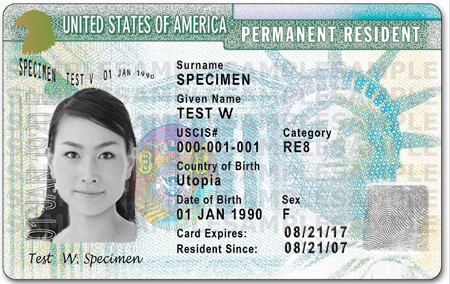
It’s time to talk about naturalization: acquiring U.S. citizenship for your Filipina spouse. But before we go further let’s review.
Here are a few of the steps I have already discussed in previous posts:
- Getting Married in the Philippines
- The Medical Exam
- The Embassy Interview
- The CFO Stamp
- The Petition to Remove Conditions on Residence (applying for the 10-year visa)
The above steps are for the spousal visa. The process for a fiancee visa is a little different, but steps 2-5 are part of everyone’s immigration who comes to the USA to be with his/her fiancee/spouse.
There is one final step once you’ve gone through all of this: naturalization. By this I mean your Filipina wife becoming U.S. citizen.
Here are the requirements, straight from the USCIS Website:
- Be 18 or older
- Be a permanent resident (green card holder) for at least 3 years immediately preceding the date of filing Form N-400, Application for Naturalization
- Have been living in marital union with the U.S. citizen spouse, who has been a U.S. citizen during all of such period, during the 3 years immediately preceding the date of filing the application and up until examination on the application
- Have lived within the state, or USCIS district with jurisdiction over the applicant’s place of residence, for at least 3 months prior to the date of filing the application
- Have continuous residence in the United States as a lawful permanent resident for at least 3 years immediately preceding the date of filing the application
- Reside continuously within the United States from the date of application for naturalization until the time of naturalization
- Be physically present in the United States for at least 18 months out of the 3 years immediately preceding the date of filing the application
- Be able to read, write, and speak English and have knowledge and an understanding of U.S. history and government (also known as civics)
- Be a person of good moral character, attached to the principles of the Constitution of the United States, and well disposed to the good order and happiness of the United States during all relevant periods under the law.
How soon can you apply? Within 90 days of reaching the requirement of living in the USA for three years as a “lawful permanent resident.” Take note: if you apply before she reaches this window your application will be denied.
Should you apply as soon as she is allowed? It’s really up to you. By this time she’ll have her 10-year visa, so there’s not necessarily a rush. You may be planning to move, expecting a baby, or other events that would make the timing less than idea.
There are three things I would advise you to keep in mind:
- Don’t wait until her 10-year visa is about to expire if you plan to apply for citizenship. By this time you should be familiar with the sluggish pace at which the U.S. government moves regarding immigration issues. In other words, plan for delays and make sure she has plenty of time left on her 10-year visa when you apply (a minimum of two years would be my recommendation). You could apply for another 10-year visa I guess, but planning ahead will eliminate paying unnecessary fees.
- Keep an eye on her Philippine passport’s expiration date. You don’t want your wife to be without a viable passport if you can help it, and you probably wouldn’t want to go through the hassle of renewing her Philippine passport if you are just weeks away from her getting a U.S. passport.
- Remember that government fees never get cheaper. The longer you wait, the more likely that fees will increase.
Let’s say you are ready to apply. Here’s the good and bad news (bad news first):
Bad news:
Your government loves fees, and you’ll have to pay 725$ when you apply (640 for the application fee and 85 for the background check).*
There is a wait involved, just like every other step.
Good news:
The n-400 form is pretty simple and straightforward–it’s actually less complicated than some of the previous steps.
 RECOMMENDED: I recommend Christian Filipina for those who are serious about finding love in the Philippines.
RECOMMENDED: I recommend Christian Filipina for those who are serious about finding love in the Philippines. You are waiting out this process together as husband and wife.
You are (hopefully) just months away from being finished with this process for good–no more USCIS red tape!
The Naturalization Process
The application for naturalization is form n-400. Go to the government page, fill it out (you can fill out this form online) and pay the fees. You may find it helpful to look up sample completed n-400’s online to guide you. You may also have to submit other documents with your application–depending on your specific situation.
Next is the biometrics notice and appointment. You should get a notice for her biometrics (fingerprinting, etc.) appointment within a month or so of applying. The appointment itself usually happens within about two months of the application. Once she’s done with biometrics you’re in for another wait.
She should get a notice for her naturalization interview appointment within 3-5 months. The interview itself usually happens within 5-6 months of the initial application. By this time she should already be studying for the interview. There are materials available on the USCIS website, and there are apps available for both Mac/Apple and Android.
The actual citizenship interview is usually scheduled within about 6 months of the application. The typical Filipina will have no trouble with this interview as long as she’s studied. Her English proficiency will be more than enough to satisfy the language requirements, and the civics portion is not difficult. The interview only takes a few minutes, but you may have to deal with the hassle of traveling to a different city (depending on where you live and the nearest USCIS office).
You should receive an invitation for the oath-taking ceremony within a month of the interview (the invitation will include a short questionnaire). But the USCIS does have 120 days (4 months) to issue a decision, so don’t get too concerned if you don’t hear from them right away.
The oath taking itself is the final step. Here are just a few helpful hints for the ceremony, but remember things can vary a little (depending on how many applicants there are, the specific venue, your location, etc.).
*There will probably be two lines going into the venue: one for the applicants and the other for the applicant’s family/friends.
*The applicant will see an agent to make sure the details are correct on the certificate of citizenship. She’ll surrender her green card and will receive the certificate after the ceremony.
*Be prepared for a significant wait. The ceremony itself will probably be about an hour, but it may not start until 2-3 hours after the time posted on the invitation letter (once again, this may vary greatly).
*The ceremony is an official court proceeding. You’ll be asked to dress and act in a way that honors the dignity of the event.
I think you’ll find this ceremony to be a very satisfying conclusion to the long process you’ve both been through. Once she has taken the oath she is a US Citizen!
She may be able to apply for her U.S. Passport at the ceremony itself if agents are available. If not she can just follow the passport application instructions from the Department of State for other locations. Applying for the very first passport must be done in person at an approved location.
She’ll want to change her citizenship status with Social Security at some point. This can be done either in person or by mail.
One last thing: she may want to consider obtaining dual citizenship–especially if the two of you want to take long visit to the Philippines (or even consider moving back there). She can do a little research and find the closest Philippine Embassy office for more details. The consulates will periodically travel to larger cities so that Filipinos can have access to services without having to go to the embassy location.
*Note: This is the fee I paid at the time of our application. Information may have changed since I wrote this post. As I mentioned in the post, fees go up!


